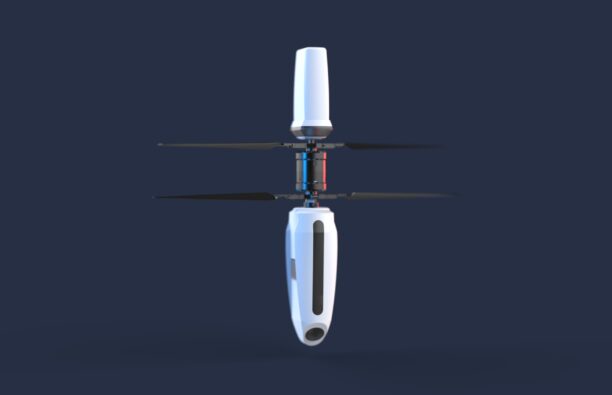
A month and a few days ago, Apple dedicated an in-person event (albeit with the usual pre-recorded presentations) to launching its latest mainstream and Pro A19 SoCs and the various iPhone 17s containing them, along with associated smart watch and earbuds upgrades. And at the end of my subsequent coverage of Amazon and Google’s in-person events, I alluded to additional Apple announcements that, judging from both leaks (some even straight from the FCC) and historical precedents, might still be on the way.
Well, earlier today (as I write these words on October 15), at least some of those additional announcements just arrived, in the form of the new baseline M5 SoC and the various upgraded systems containing it. But this time, again following historical precedent, they were delivered only in press release form. Any conclusions you might draw as the relative importance within Apple of smartphones versus other aspects of the overall product line are…well…
The M5 SoC

Looking at the historical trends of M-series SoC announcements, you’ll see that the initial ~1.5-year latency between the baseline M1 (November 2020) and M2 (June 2022) chips subsequently shrunk to a yearly (plus or minus a few months) cadence. To wit, since the M4 came out last May but the M5 hadn’t yet arrived this year, I was assuming we’d see it soon. Otherwise, its lingering absence would likely be reflective of troubles within Apple’s chip design team and/or longstanding foundry partner TSMC. And indeed, the M5 has finally arrived. But my concerns about development and/or production troubles still aren’t completely alleviated.

Let’s parse through the press release.
Built using third-generation 3-nanometer technology…
This marks the third consecutive generation of M-series CPUs manufactured on a 3-nm litho process (at least for the baseline M5…I’ll delve into higher-end variants next). Consider this in light of Wikipedia’s note that TSMC began risk production on its first 2 nm process mid-last year and was originally scheduled to be in mass production on 2 nm in “2H 2025”. Admittedly, there are 2.5 more months to go until 2025 is over, but Apple would have had to make its process-choice decision for the M5 many months (if not several years) in the past.
Consider, too, that the larger die size Pro and Max (and potentially also Ultra) variants of the M5 haven’t yet arrived. This delay isn’t without precedent; there was a nearly six-month latency between the baseline M4 and its Pro and Max variants, for example. That said, the M4 had shown up in early May, with the Pro and Max following in late October, so they all still arrived in 2024. And here’s an even more notable contrast: all three variants of the M3 were launched concurrently in late October 2023. Consider all of this in the light of persistent rumors that M5 Pro- and Max-based systems may not show up until spring-or-later 2026.
M5 introduces a next-generation 10-core GPU architecture with a Neural Accelerator in each core, enabling GPU-based AI workloads to run dramatically faster, with over 4x the peak GPU compute performance compared to M4. The GPU also offers enhanced graphics capabilities and third-generation ray tracing that combined deliver a graphics performance that is up to 45 percent higher than M4.
Note that these Neural Accelerators are presumably different than those in the dedicated 16-core Neural Engine. The latter historically garnered the bulk of the AI-related press release “ink”, but this time they’re limited to terse “improved” and “faster” descriptions. What does this tell me?
- “Neural Accelerator” is likely a generic term reflective of AI-tailored shader and other functional block enhancements, analogous to the increasingly AI-optimized capabilities of NVIDIA’s various GPU generations.
- The Neural Engine, conversely, is (again, I’m guessing) largely unchanged here from the one in the M4 series, instead indirectly benefiting from a performance standpoint due to the boosted overall SoC-to-external memory bandwidth.
M5 features the world’s fastest performance core, with up to a 10-core CPU made up of six efficiency cores and up to four performance cores. Together, they deliver up to 15 percent faster multithreaded performance over M4.
Core count proportions and totals both match those of the M4. Aside from potential “Neural Accelerator” tweaks such as hardware-accelerated instruction set additions (à la Intel’s MMX and SSE), I suspect they’re largely the same as the prior generation, with any performance uplift resulting from overall external memory bandwidth improvements. Speaking of which…
M5 also features…a nearly 30 percent increase in unified memory bandwidth to 153GB/s.
And later…
M5 offers unified memory bandwidth of 153GB/s, providing a nearly 30 percent increase over M4 and more than 2x over M1. The unified memory architecture enables the entire chip to access a large single pool of memory, which allows MacBook Pro, iPad Pro, and Apple Vision Pro to run larger AI models completely on device. It fuels the faster CPU, GPU, and Neural Engine as well, offering higher multithreaded performance in apps, faster graphics performance in creative apps and games, and faster AI performance running models on the Neural Accelerators in the GPU or the Neural Engine.
The enhanced memory controller is, I suspect, the nexus of overall M4-to-M5 advancements, as well as explaining why Apple’s still able to cost-effectively (i.e., without exploding the total transistor count budget) fabricate the new chip on a legacy 3-nm lithography. How did the company achieve this bandwidth boost? While an even wider bus width than that used with the M4 might conceptually provide at least part of the answer, it’d also both balloon the required SoC pin count and complicate the possible total memory capacity increments. I therefore suspect a simpler approach is at play. The M4 used 7500 Mbps DDR5X SDRAM, while the M4 Pro and Max leveraged the faster 8533 Mbps DDR5X speed bin. But if you look at Samsung’s website (for example), you’ll see an even faster 9600 Mbps speed bin listed. 9600 Mbps is 28% more than 7500 Mbps…voila, there’s your “nearly 30 percent increase”.
There’s one other specification, this time not found in the SoC press release but instead in the announcement for one of the M5-based systems, that I’d like to highlight:
…up to 2x faster storage read and write speeds…
My guess here is that Apple has done a proprietary (or not)-interface equivalent to the industry-standard PCI Express 4.x-to-5.x and UFS 4.x-to-5.x evolutions, which also tout doubled peak transfer rate speeds.
Speaking of speeds…keep in mind when reading about SoC performance claims that they’re based on the chip running at its peak possible clock speed, not to mention when outfitted with maximum available core counts. An especially power consumption-sensitive tablet computer, for example, might clock-throttle the processor compared to the SoC equivalent in a mobile or (especially) desktop computer. Yield-maximization (translating into cost-minimization) “binning” aspirations are another reason why the SoC in a particular system configuration may not perform to the same level as a processor-focused press release might otherwise claim. Such schemes are particularly easy for someone like Apple—who doesn’t publish clock speeds anyway—to accomplish.
And speaking of cost minimization, reducing the guaranteed-functional core counts on a chip can significantly boost usable silicon yield, too. To wit, about those M5-based systems…
11” and 13” iPad Pros

Last May’s M4 unveil marked the first time that an iPad, versus a computer, was the initial system to receive a new M-series processor generation. More generally, the fifth-gen iPad Pro introduced in April 2021 was the first iPad to transition from Apple’s A-series SoCs to the M-series (the M1, to be precise). This was significant because, up to that point, M-series chips had been exclusively positioned as for computers, with A-series processors for iPhones and iPads.
This time, both the 11” and 13” iPad Pro get the M5, albeit with inconsistent core counts (and RAM allocations, for that matter) depending on the flash memory storage capacity and resultant price tag. From 9 to 5 Mac’s coverage:
- 256GB storage: 12GB memory, M5 with 9-core CPU, 10-core GPU
- 512GB storage: 12GB memory, M5 with 9-core CPU, 10-core GPU
- 1TB storage: 16GB memory, M5 with 10-core CPU, 10-core GPU
- 2TB storage: 16GB memory, M5 with 10-core CPU, 10-core GPU
It bears noting that the 12 GByte baseline capacity is 4 GBytes above what baseline M4 iPad Pros came with a year-plus ago. Also, the deprecated CPU core in the lower-end variants is one of the four performance cores; CPU efficiency core counts are the same across all models, as are—a pleasant surprise given historical precedents and a likely reflection of TSMC’s process maturity—the graphics core counts. And for the first time, a cellular-equipped iPad has switched from a Qualcomm modem to Apple’s own: the newest C1X, to be precise, along with the N1 for wireless communications, both of which we heard about for the first time just a month ago.
A brief aside: speaking of A-series to M-series iPad Pro transitions, mine is a second-generation 11” model (one of the fourth-generation iPad Pros) dating from March 2020 and based on the A12Z Bionic processor. It’s still running great, but I’ll bet Apple will drop software support for it soon (I’m frankly surprised that it survived this year’s iPadOS 26 cut, to be honest). My wife-and-I have a wedding anniversary next month. Then there’s Christmas. And my 60th birthday next May. So, if you’re reading this, honey…
The 14” MacBook Pro

This one was not-so-subtly foreshadowed by Apple’s marketing VP just yesterday. The big claim here, aside from the inevitable memory bandwidth-induced performance-boost predications, is “phenomenal battery life of up to 24 hours” (your mileage may vary, of course). And it bears noting that, in today’s tariff-rife era, the $1599 entry-level pricing is unchanged from last year.
The Vision Pro

The underlying rationale for the performance boost is more obvious here; the first-generation model teased in June 2023 with sales commencing the following February was based on the three-generations-older M2 SoC. That said, given the rampant rumors that Apple has redirected its ongoing development efforts to smart glasses, I wonder how long we’ll be stuck with this second-generation evolutionary tweak of the VR platform. A redesigned headband promises a more comfortable wearing experience. Apple will also start selling accessories from Logitech (the Muse pencil, available now) and Sony (the PlayStation VR2 Sense controller, next month).
Anything else?
I should note, by the way, that the Beats Powerbeats Fit earbuds that I mentioned a month back, which had been teased over YouTube and elsewhere but were MIA at Apple’s event, were finally released at the end of September. And on that note, other products (some currently with evaporating inventories at retail, another common tipoff that a next-generation device is en route) are rumored candidates for near-future launch:
- Next-gen Apple TV 4K
- HomePod mini 2
- AirTag 2
- One (or multiple) new Apple Studio Display(s)
- (???)
We shall see. Until next time, I welcome your thoughts in the comments!
—Brian Dipert is the Editor-in-Chief of the Edge AI and Vision Alliance, and a Senior Analyst at BDTI and Editor-in-Chief of InsideDSP, the company’s online newsletter.
Related Content
- Amazon and Google: Can you AI-upgrade the smart home while being frugal?
- The transition to Apple silicon Arm-based computers
- Apple’s 2022 WWDC: Generational evolution and dramatic obsolescence
- Apple’s Spring 2024: In-person announcements no more?
- Apple’s “October Surprise”: the M3 SoC Family and the A17 Bionic Reprise
- Apple’s 2H 2025 announcements: Tariff-touched but not bound, at least for this round
The post Apple’s M5: The SoC-and-systems cadence (sorta) continues to thrive appeared first on EDN.

.jpeg)

































 English (US) ·
English (US) ·